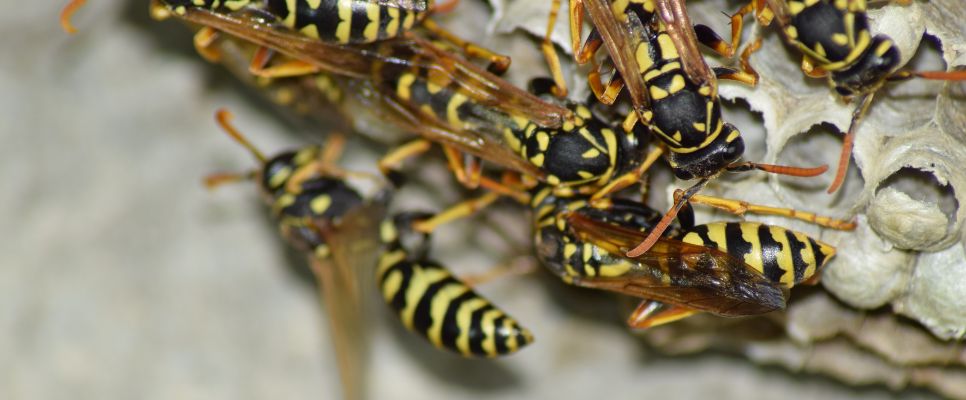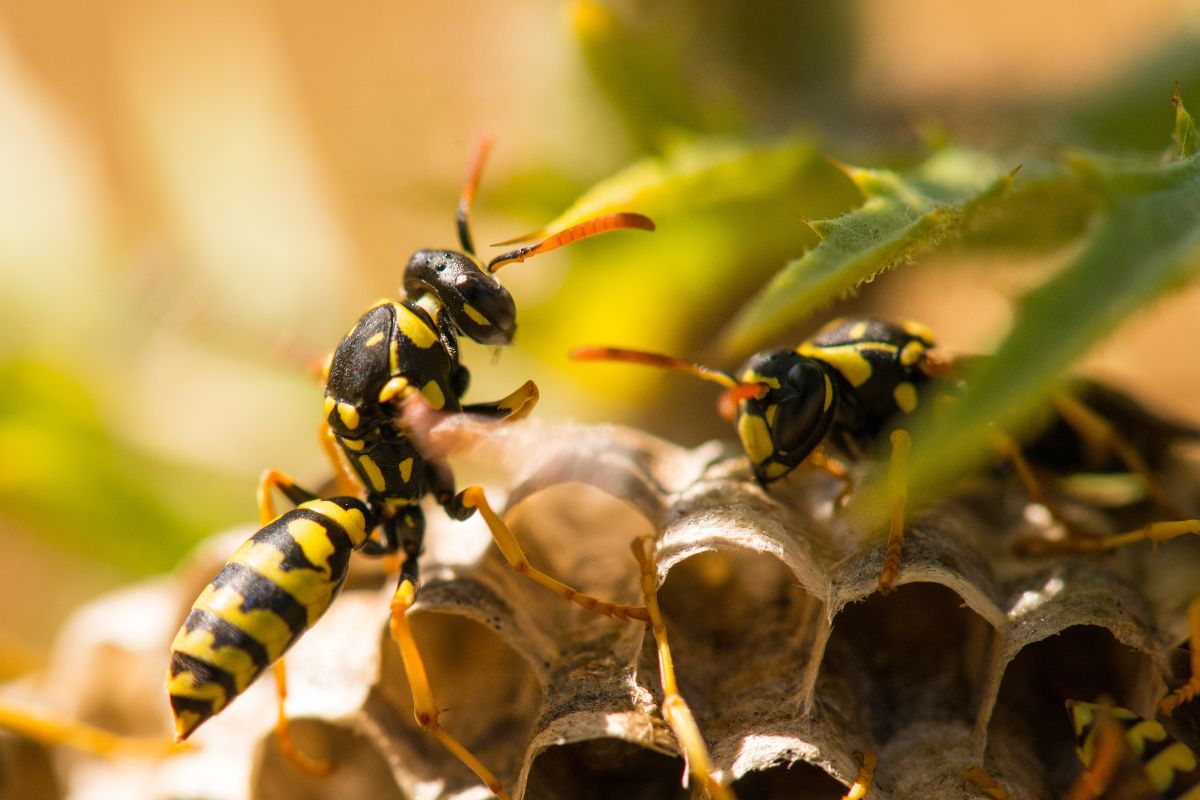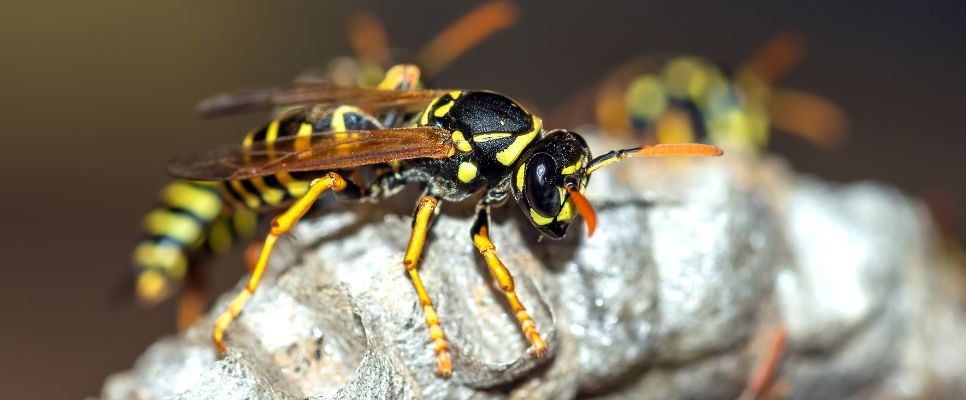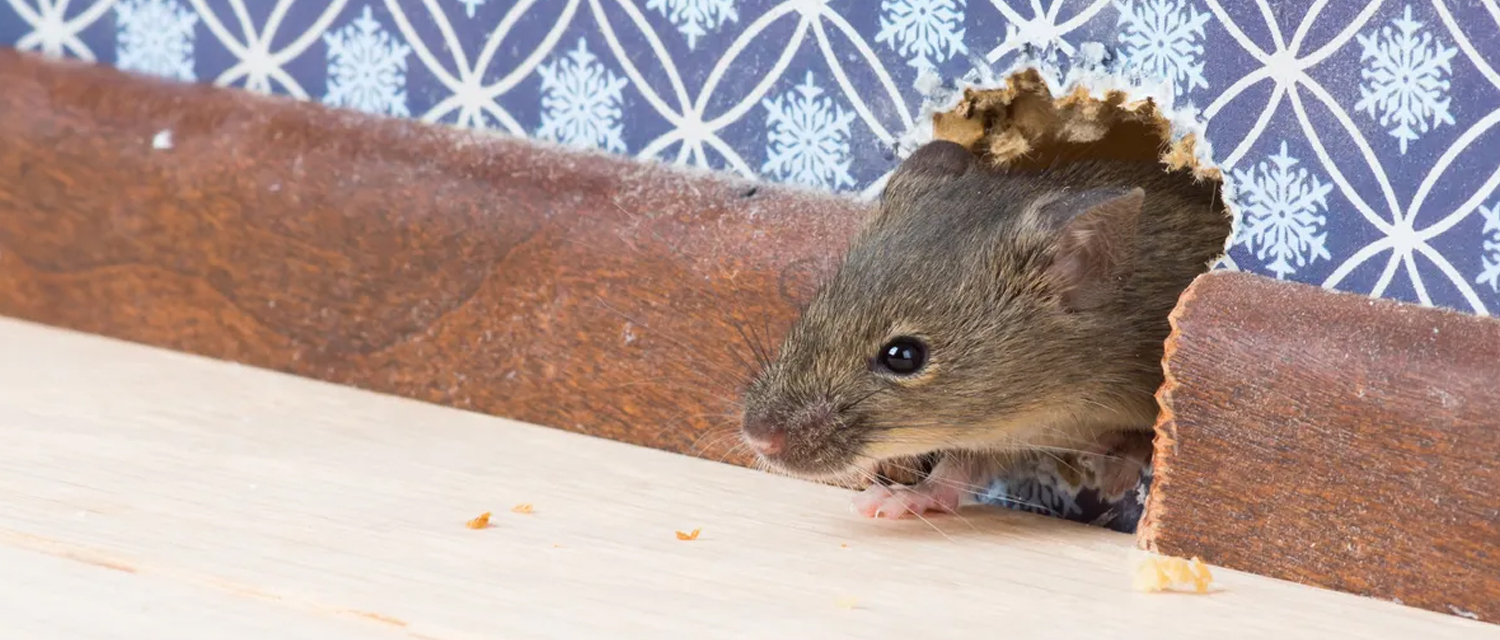Understanding Wasps
To fully appreciate the dangers that wasps pose, it is helpful first to know what wasps are and what causes them to act this way.
What Are Wasps?
Wasps are members of the Hymenoptera order as well as bees and ants. Unlike bees, wasps are predators and often can be more aggressive than their colleagues. They are slipper-shaped insects and have sharp apparatuses in the shape of pointed needles which are used to inject poison in their prey. There are two main types of wasps commonly found in backyards:
- Social Wasps: These nest in large groups with species such as yellowjackets and hornets. They prefer to make their nest in a sheltered area either in the corner of the house under eaves, bush or even digging a hole in the ground.
- Solitary Wasps: They construct their burrow or nest. Mud Dauber is the famous solitary wasp. It can be painful if stinged by solitary wasps though not as aggressive as the social wasps.
How Wasps Build Their Nests?
Wasps use a material they make from wood pulp that they have chewed together with their saliva in constructing nests. The nest structure also looks like a honeycomb, hexagonal shapes are used to accommodate larvae and eggs. Accordingly, wasp nests may develop quite significantly observing dimensions of several feet in diameter based on the species.
Wasps commonly choose well-secluded, quiet areas, where they can nest in trees and shrubs; in attics, sheds, and eaves of some homes. These nests are normally small at the start, though they can become larger rather quickly.

The Risks of Ignoring a Wasp Infestation
Although solitary wasps may cause inconvenience and mild discomfort, a colony around your house is something that should be avoided. Ignoring the issue can result in the following risks:
Stings and Allergic Reactions
The possible effect of wasp invasion is the straightforward likelihood of being stung. The wasps being sting-less are territorial and will attack or sting in defence of their colonies. In a single sting, one might feel a burning sensation or redness while in the case of multiple stings, one would suffer from severe pain and huge swellings.
Sometimes people can get a serious reaction to a wasp sting which is also called anaphylaxis. This deadly condition results in signs that include trouble breathing and swallowing, throat constriction, dizziness, and low blood pressure. Anaphylaxis, if not treated early, requires medical attention and in severe cases causes death.
Not everybody is allergic to wasp venom but if he or she has had a reaction to stings in the past then the danger that is posed is high. In such instances, the best thing to do is to deal with a wasp problem without wasting much time.
Increased Aggression as Nests Grow
Wasps are relatively more aggressive towards human beings during the last quarter of summer and the whole of autumn because their colonies are their largest. There is however a noticeable increase in the chances of a sting once the nests become many, and the colony is larger. Outlined, wasps are more likely to act defensively around their nests, and in case, they will use force to chase away an intruder. This could range from things such as humans coming too close to the nest or pets frolicking around the vicinity.
If the infestation is ignored, you may find other nests in your backyard, and this raises the likelihood of interacting with furious wasps. It could be brought out by a seemingly innocuous activity like mowing the lawn or simply sitting outside.
Structural Damage to Property:
That’s also true for wasps for they can nib on the constructions nearby. It’s important to note that they build their nests from wood fibers which they then have to chaw and add saliva to form. Although it doesn’t bring heavy problems in a short period, it can bring the structure of wooden surfaces if the nest becomes very large.
Further, the same issue of construction as well as the growth of nests over time puts pressure on other related materials within the building and could lead to more long-term effects. For example, a wasp nest constructed under the roof eaves may cause the actual breakdown of the construction material at some point in time if it is left unattended.
Danger to Pets and Children:
Kids and pets, especially dogs are playful and are not in a position to discern the risk that comes with wasps. Hitches can be established when a child decides to play close to a nest and will most likely cause the stinging. In the same way, pet animals that dig gardens or play near a nest are likely to trigger an attack.
Because wasps use a sting to defend their nests, and the pain from the sting could be severe, an infestation presence is a threat not only to grown-ups but also to children who may not comprehend the severity of the danger.
Attracting Other Pests:
The existence of wasp nests also invites other pests to come to your backyard. Some wasps feed on flies, caterpillars and spiders, hence the probability of other types of insects being found around your home increases when there is the presence of wasps. While searching for food, wasps will also interfere with, or provoke other insects that may be a threat to your plants or house.
Also, wasps like to sting rotten fruits or anything sweet such as soft drinks and sweet foods. If you have many such items in the backyard, you may inadvertently get more wasps or other pests, for example, ants or rodents in the house.
Stress and Anxiety
Wasps are not only physically dangerous, a wasp infestation also affects psychologically you and your family members. Children are forced to be scared of playing outside while adults will stop going for outings or having fun in the compound.
An aggressive-sized nest can also bring a feeling of discomfort to a home or an outdoor space thus negatively affecting one’s ability to relax and or host company on the compound.
Potential for Fire Hazard:
Although not very common, more often wasp nests can cause a fire threat. Some of the pests include; Paper wasps, this species prefers to nest in the attics or inside walls. In some way, if a nest is located close to electrical wiring there is a small possibility of a fire from electrical failure or electrical fire. Despite this, this is not very often observed and you have to consider this if the nest is vast and it is situated in a risky area.










